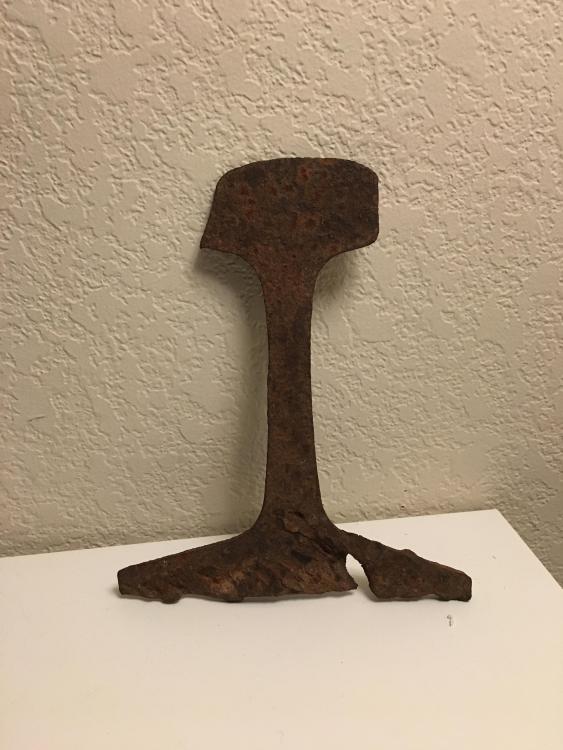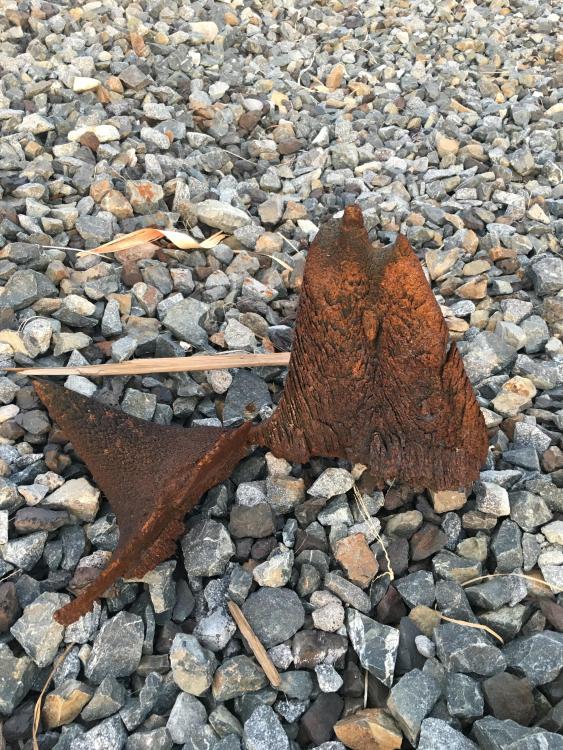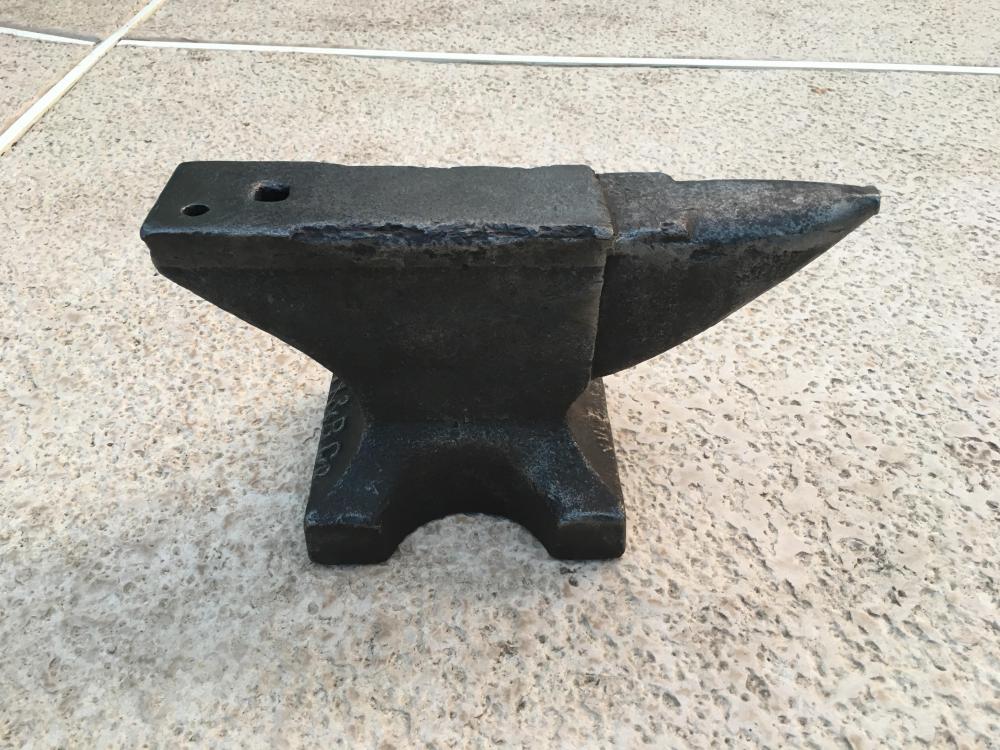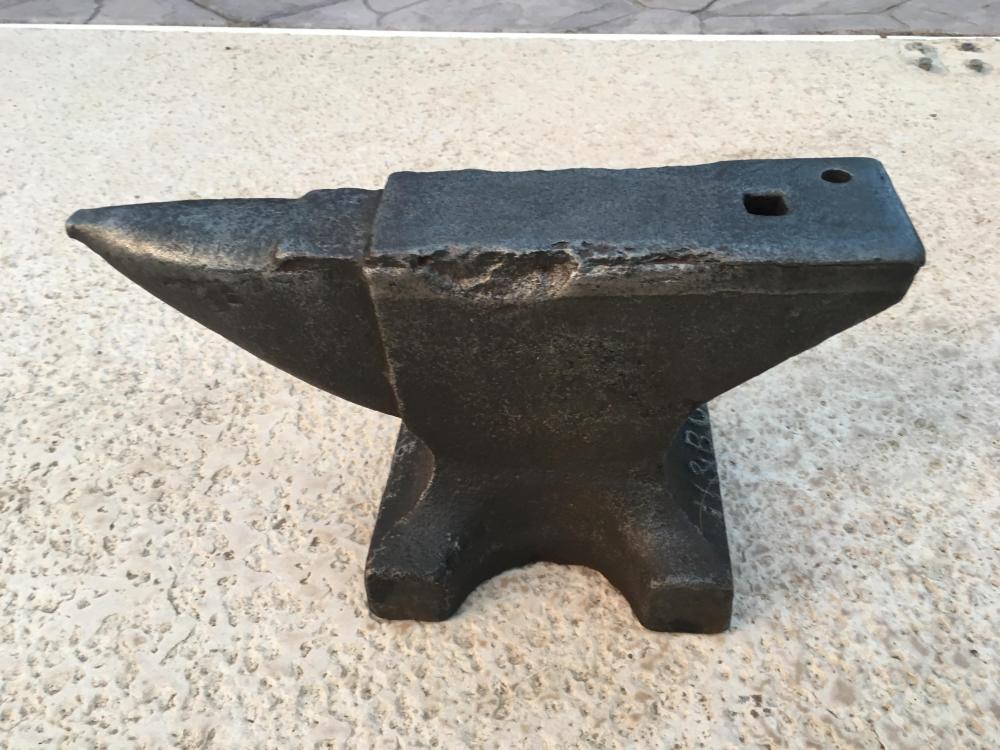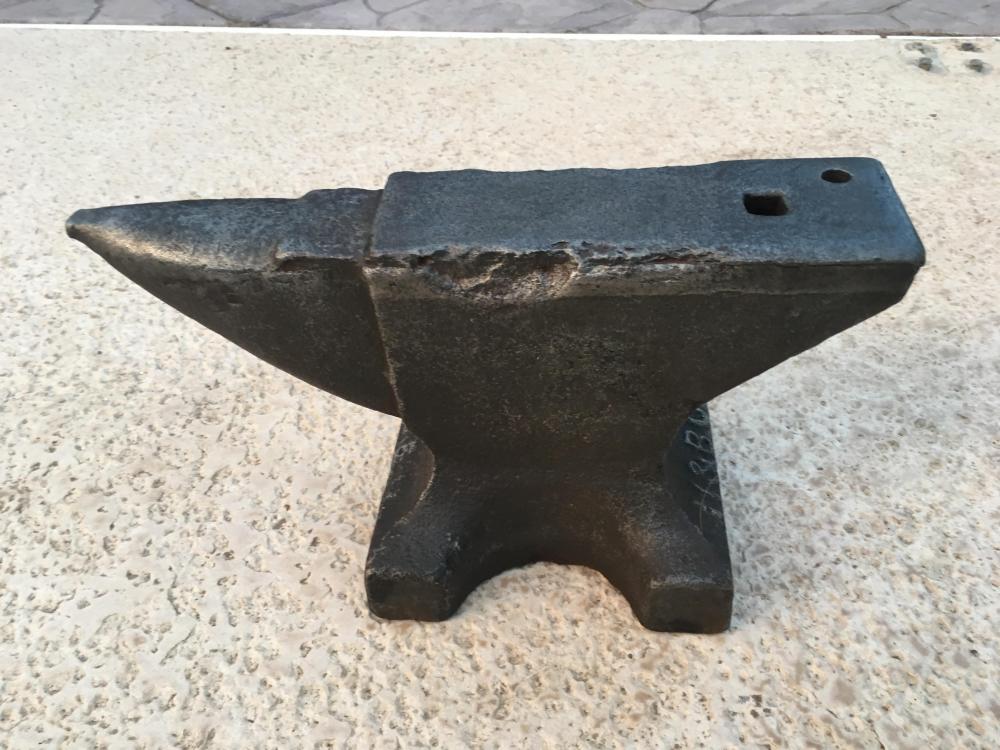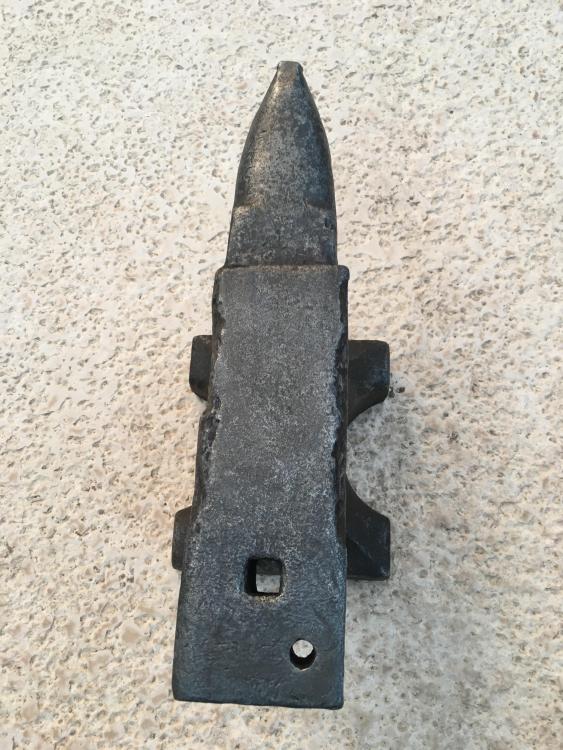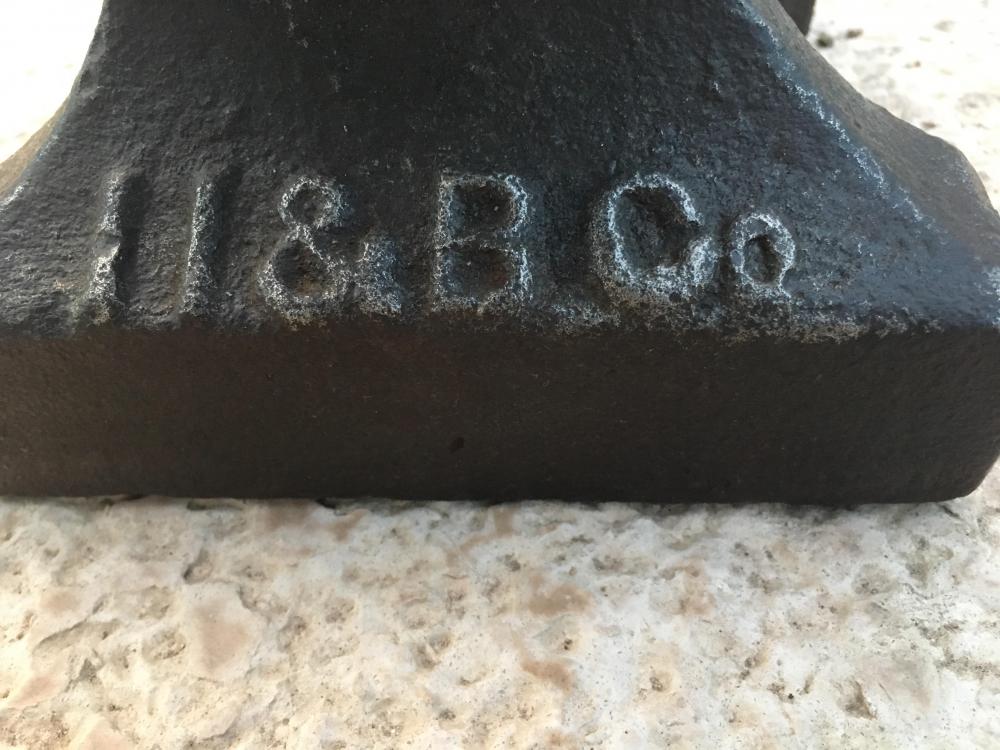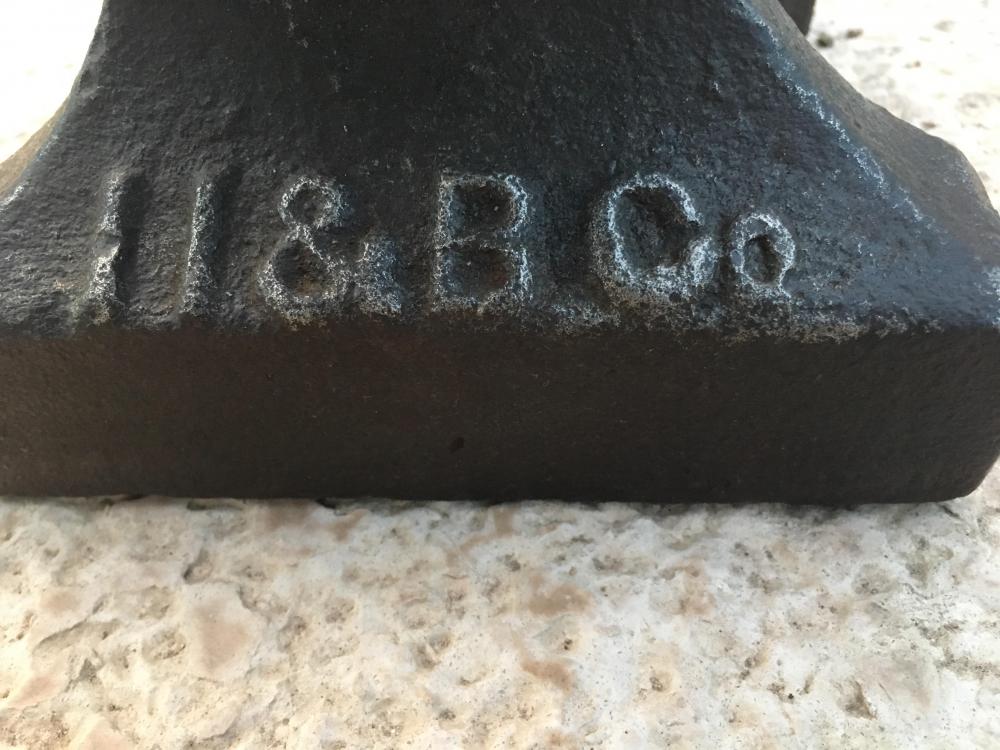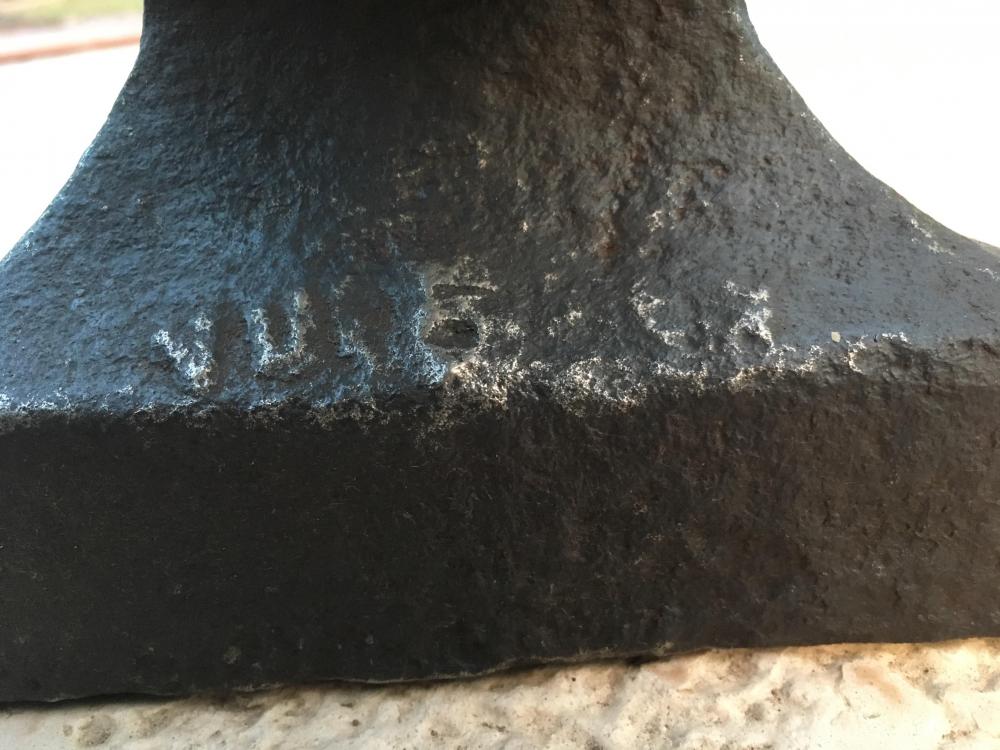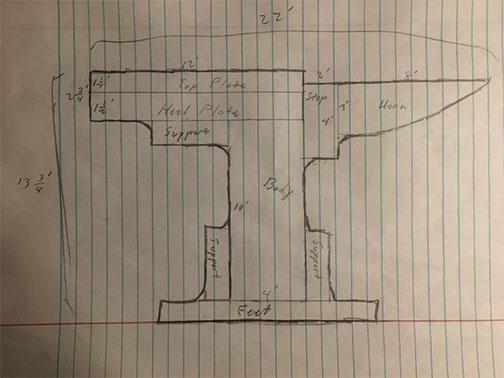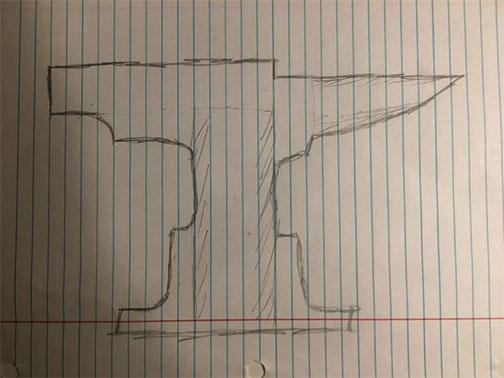
Steven511
Members-
Posts
68 -
Joined
-
Last visited
Content Type
Profiles
Forums
Articles
Gallery
Downloads
Events
Everything posted by Steven511
-
The edges are all squared, if that's what you are asking TomIre.
-
A 68lb (weighed on a home scale), London-pattern anvil, 1inch hardie hole with a relatively large horn. Made presumably in 2018/2019 (bought 2019), made also presumably of ductile cast iron. 95% rebound on the face over the body, 85% on the heel, 80% on the clip, 50-60% on the horn Bought from Centaur Forge online. Personally, this anvil is great. I've heard that NC is the runt of the litter in new anvil brands, so to speak. Being made of ductile cast iron and sold pretty cheap, they get an underwhelming reputation. However, this anvil seems to pass all the checkmarks and, if not for prior knowledge, I would have called my little anvil a cast steel one of very high quality. A ball bearing drop produced great results, as did the file test. The hardened face and clip of the anvil skate my Nicholson file even better than my hammer, though the horn is as soft or softer than mild steel. I've had limited time with my anvil, but it seems to be well made, holds no dents, and works just fine as a portable anvil Overall, I would recommend this anvil/anvil brand to anyone not doing heavy work. The primary 70-80lb anvils NC-Tool sells just aren't cut out for heavy forging, being too light. However, someone looking to do work like knives, hooks, or even just small hammers would do well with this anvil. The knifemaker anvil in particular is good for most smiths, because it lacks the turning cams and general-use hole in it's heel, which get in the way in most non-farrier forging. Overall, the brand's only downside to me is the farrier-centered design in most of it's anvils. However, buying the more general-smith style one (as I did) makes a fine tool, and if you can get past the farrier add-ons of the other anvils in their repertoire, NC provides the best bang for your buck out of all the new anvil brands and, with rising prices, even many craigslist anvils.
-
School Guest Blacksmith Questions
Steven511 replied to Steven511's topic in Blacksmithing, General Discussion
Thanks for the suggestions! I'll take a notebook, ask them some broad questions, and if things are going well I'll ask if they are ok with me checking out their shop. Thanks Glenn for the links, I've got a class for Friends of the Fort already, and I've joined NV Blacksmiths. -
School Guest Blacksmith Questions
Steven511 replied to Steven511's topic in Blacksmithing, General Discussion
Of course Glenn. I forgot to mention these questions would be asked personally after class. I wouldn't dream of disrupting what might be a sparking moment for a soon-to-be blacksmith! -
At my school, a guest blacksmith artist will come into to the class to talk about making/selling his art. This is the first time I'll ever get to (in person) ask detailed questions to someone who's done this for a long time, and likely the only time for a while. I know I can ask many questions on this forum, but I was wondering if anyone had any area/blacksmith specific questions that I would want to ask him? Thanks!
-
An inventive design to use it as a handle. Great job for your first leaf! Along with some nice woodworking, I'm sure your wife will be quite happy with her present!
-
A bit of a fumble on my part, SLAG . I tried editing the post, but my upload speed is quite slow. It'll be fixed soon.
-
When I was walking past the train tracks the other day, I found this laying on the ground. I thought it was kinda cool, so I picked it up. (This was ~20 feet from the tracks, I don’t think it’s important) I was just wondering why the workers might have taken this sliver of rail off? Whatever the reason, it definitely makes a cool trinket, and it’ll be on my workshop wall quite soon.
-
I was walking along the train tracks (I know, I shouldn’t, but I was) and came across these strange specimens. What could they be from? I assume heavy railway equipment, but they are so rusted I have no clue. The amount of rust on them makes them look I n c r e d I b l y old. I found a 100 year old hammer left untouched in my backyard, and it had less rust than this. The pattern of the rust reminds me of wrought iron. Is this wrought or is it just because of how long it’s been rusting? Overall: What was this used for, how old is it, and what is it made of? Thanks!
-
Sorry for the slow reply, busy school work kept me away from the computer for a while. Due to procrastination, the earliest class I could get was on Dec 8. Which are you going to?
-
Nice to have you join, Theophilus. I'm taking a class too(I assume you are talking about the Old Mormon Fort classes?) maybe we'll see each other there! In the mean time, to quiet noise I would recommend securing whatever you will use as your anvil tightly, and bedding it in a thick layer of sand. Those precautions took my hammering noise down from literally busting my eardrums every hit to being only slightly louder than a bouncy house blower. Good luck!
-
What a collection! Sincerest apologies about your injury, I think I speak for everyone on this forum when I say that it is a shame that an individual as admirable as your self had to be so unlucky. As to my specific interests, they are focused mainly on the relationship between different cultures and blacksmithing, especially cultural influence on the style of blackmithing tools.
-
Thanks Thomas! I'll be sure to check out my library very soon for some of those texts. How many of these have you read? Just the list of titles makes my head spin a bit, so I'll be sure to get started right away! Maybe I'll finish by the time I'm 200, if I'm lucky
-
In many of the questions I've asked and read, venerable smiths have answered questions with facts/statistics that aren't found anywhere else on the internet (at least as far as I've found). My question is how these smiths came to find these oft quoted facts, especially that relating to blacksmithing in the past. Many smiths talk about how blacksmiths would work historically, but I've seen little to no facts online about it. How do they find thee things out? Is it books? Other smiths? Something else? I'm very interested in history, so I'd quite like to know of any sources I could use to learn about blacksmithing in the past. Any help is appreciated, and recommendations especially so. Thanks!
-
Thanks for the clarification on the markings, Thomas It was good for around here- $150 for it, though at your prices I feel cheated. I'm hoping to get a knife or two out of it before I sell it to someone else refurbished. I'd feel guilty for passing it on so soon if not for how much work I had to put in getting the rust off. The thing was covered in about a quarter inch of crud, it was probably 55lbs when it was first made. Someone really didn't appreciate this thing- that much rust, and the chunks off the sides make me believe someone used and abused this thing for a very long time.
-
I recently found a deal on Craigslist for this 50lb anvil. I cleaned it up with a wire brush and oiled it with wd40. Cleaning it up I found that it had 2 markings. One either says II&B or U&B, and the other is pretty distorted, but I can make out a “vul5”. Im pretty sure it is a Vulcan as the body is cast iron and the “vul” marking, but the other marking confuses me. What is company is that marking from? Also, is there anything else I should do for the anvil? I’ve been debating putting a layer of paint on, but I’m unsure. Thanks!
-
Thomas - By faceplate I was just referring to whatever would become the hardened plate of my anvil. I might be mixing it up with a top plate, though I could swear it is called both. As for the marking, I like the idea but I have absolutely no idea how to engrave steel. How much would I have to practice before I could make a decent graving?
-
Because I am lazy and don't really want to reply to every single comment, I'll just go over the main points people have brought up. Overall I get the feeling that I have severely under researched what kind of anvil I want. I mostly just went with whatever looked right, rather than actually building it for the kind of work I want. I'll look into it more and find out what style works best for me but still follows my design direction. The references and links will surely help, so if anyone has more links to anvil design or related, I'd appreciate sharing. Just for future reference, my design inspiration is somewhat like what Thomas mentioned with Neo-Brutalism, but with an added flare of marble modernity and just a sprinkle of hysteria; think something that a Roman artisan might come up with after taking LSD for the first time. I'm getting the feeling that I'll need to find a new face plate, as it seems that the shortest length my supplier has is 12in O1 and it seems like I should be getting something like 8-10in 1060, though I can't find anything that's thick enough, does anyone know online suppliers that sell something like 1x3x10? Overall, thanks for both the advice and support, I'll probably be a bit slow at making it, as I'm buying, testing, refurbishing, and selling back a 50lb Vulcan to use as a competitor to my welded one, as they cost about the same in materials. However, when I make progress I'll be sure to post it here ASAP. EDIT: A question I forgot to ask in my original post was the problem of marking the anvil. There are a variety of ways that I could do it, but I was wondering 1: How I should mark it, 2: Where I should mark it, and 3: What mark should I use? I'm thinking I could hot-stamp a 1/4in plate S.H (initials) and then weld that to the body. Any ideas?
-
JHCC - thanks for the clarification on what “decarb” means, I’ll look in it it to make sure the plate is hardened. As for the welding, that is why I want to do this project. I know that it won’t be as good as a high quality forge-welded anvil, but I wanted to see if it could stand against something like a Vulcan, since it has a much thicker plate. This project is more of a science experiment than actually trying to make an amazing anvil, so I’m ok if it doesn’t turn out.
-
Glenn - I wasn't planning on getting a full penetration weld on the face plate, as I wanted to test the strength of a side-only weld. If it ends up breaking off I'll make a full penetration weld using the 1/4in square bar technique. For the horn and step, I was planning on using the 1/4in bar technique as well,adding a half inch to the step. The top plate comes pre-hardened (it says"decarb" and I've read that means it is hardened - correct me if I'm wrong), and I'll put some coolant oil on the face so that when welding the corners they shouldn't get more than a dark straw temper at the top, which optimistically will also help stop corners cracking off. I'm using the smaller waist because it's the biggest single piece available to me. I'm pretty sure that having a smaller, mono-steel waist is better than having a larger, patchwork welded waist, but tell me if you think I should weld it together. I'll definitely try making it out of some 4x4s before I buy the steel. Thanks for the feedback! Marc - Definitely a cool anvil he made, I'm actually basing off what a youtuber called The IronKiwi (I hope it's ok to mention him) did, which as very similar to what you showed me. MotoMike - I'm not quite certain if full penetration is needed, which is partially why I am making this. I have seen a lot of mixed results, so I wanted to try it on my own. I'm gonna be doing a side-only weld first, then if that doesn't hold up I will do a full penetration weld using the 1/4in bar technique. Thanks for all the feedback!
-
I'm doing a sculpture art extra-credit project in school, and decided that it was a perfect excuse to try making my own anvil. I'm doing it for art class, but I will also be testing it's rebound, weld strength, etc against a U&B. I came up with a design loosely based on the Austrian style, but more going with whatever looked proportional and what shape steel I can get. the top is 3 inch wide on the horn, step, heel, etc, but tapers out to a 4 inch body and 5-6 inch feet. I was wondering if this is a decent design? What would you guess the weight to be? According to my steel supplier's estimates I believe it to be around 120lbs after shaping the horn. Any consideration, contemplation, observation, rumination, examination, speculation, or any other form of thoughtful alliteration is welcome. The materials used are as listed: 4in x 10in round mild steel bar (body) x1 3in x 8in round mild steel bar (horn) x1 3in x 1.5in x 12in mild steel flat bar (heel plate) x1 3in x 1.25in x 12in O1 flat bar (face plate) x1 ~6in x 1in x 12in rail tie plate (feet) x1 3in x 2in x 4in mild steel flat bar (support/weight) x5
-
I'd say it depends on the price mostly. I would pay around $400-$450 for a 100 pounder, maybe $225-$275 for a 45 pounder, though prices in my area are pretty high. Like Irondragon said, a 45lb is a tad light for shop work unless you are planning on doing mostly small projects (leaves, small hooks) but then again I started off with a 15lb rr plate and made some decent knives. If you can afford it and it isn't overpriced, go for the 100lb. If you are on a budget or the 100lb is overpriced, go for the 45. All this being said as
-
What kind should I buy?
Steven511 replied to Wrought Iron Farm's topic in Blacksmithing, General Discussion
Any basic projects (leaves, hooks, tongs, keychains, etc) don't need to be high carbon steel, if that is what you're asking. If you are asking about size, I usually use something like 1/4in to 1/2in square or round for most projects. I'm a little too tired right now to see if you are near any selling scrapyards, so I'll just say that if you are near any, use those for steel. if you are like me and need steel from either online or over-priced stores, try to find the cheapest place near you. If you are on a budget, rebar at home-depot is pretty cheap, and though some people are just a tad snobby about it, I haven't had any problems with simply squaring off the texture and using it for most mild-steel projects. -
Quite a good deal. I would have jumped on it myself had I enough cash I guess I'll just have to be a bit more patient, wait for something at my price range to come around. Nice find!
-
Ah, sad to hear that .I was hoping that the cast iron would be hot enough to weld itself to the steel pieces, making an only slightly weak point.
